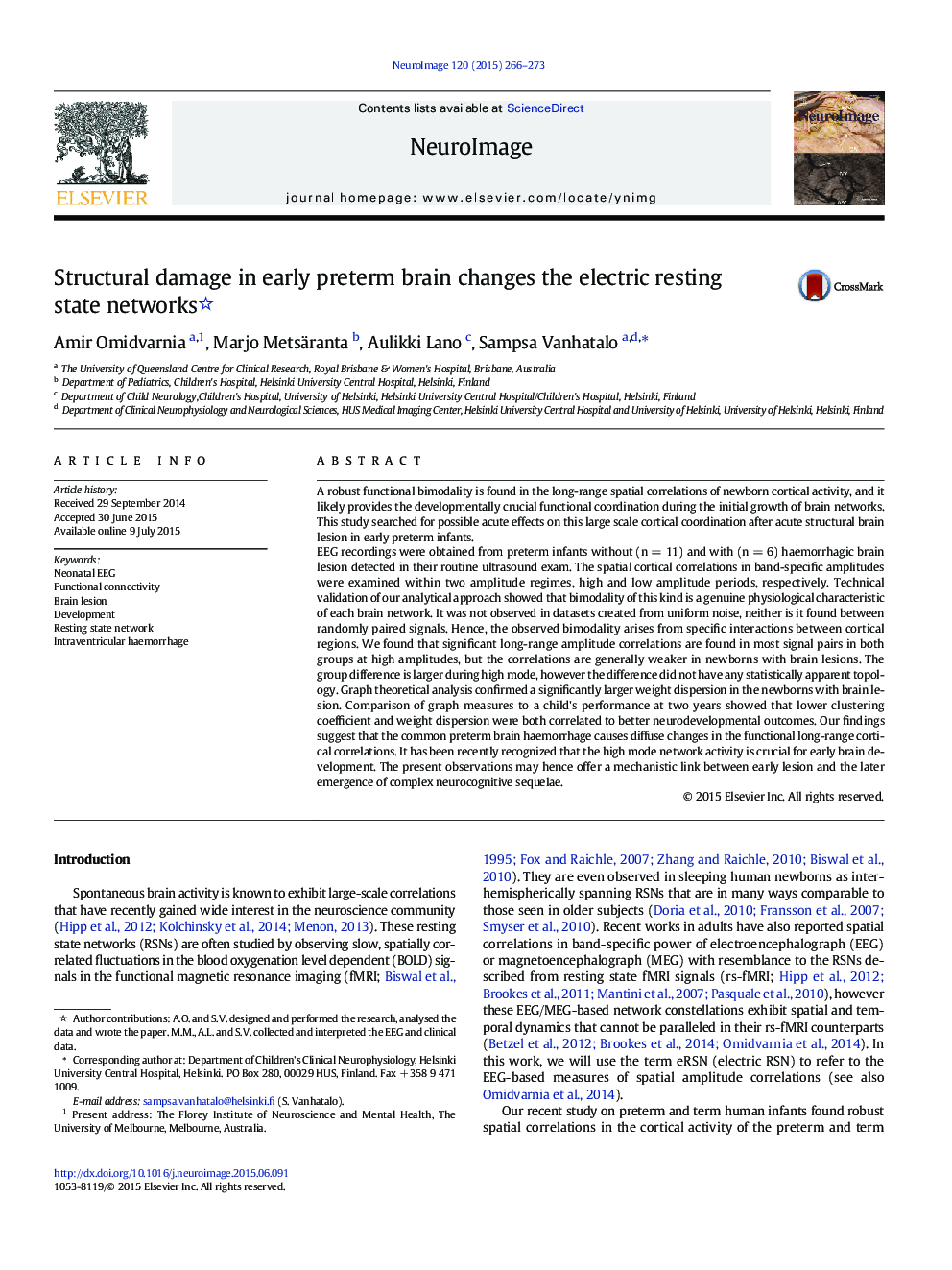| Article ID | Journal | Published Year | Pages | File Type |
|---|---|---|---|---|
| 6024485 | NeuroImage | 2015 | 8 Pages |
Abstract
EEG recordings were obtained from preterm infants without (n = 11) and with (n = 6) haemorrhagic brain lesion detected in their routine ultrasound exam. The spatial cortical correlations in band-specific amplitudes were examined within two amplitude regimes, high and low amplitude periods, respectively. Technical validation of our analytical approach showed that bimodality of this kind is a genuine physiological characteristic of each brain network. It was not observed in datasets created from uniform noise, neither is it found between randomly paired signals. Hence, the observed bimodality arises from specific interactions between cortical regions. We found that significant long-range amplitude correlations are found in most signal pairs in both groups at high amplitudes, but the correlations are generally weaker in newborns with brain lesions. The group difference is larger during high mode, however the difference did not have any statistically apparent topology. Graph theoretical analysis confirmed a significantly larger weight dispersion in the newborns with brain lesion. Comparison of graph measures to a child's performance at two years showed that lower clustering coefficient and weight dispersion were both correlated to better neurodevelopmental outcomes. Our findings suggest that the common preterm brain haemorrhage causes diffuse changes in the functional long-range cortical correlations. It has been recently recognized that the high mode network activity is crucial for early brain development. The present observations may hence offer a mechanistic link between early lesion and the later emergence of complex neurocognitive sequelae.
Keywords
Related Topics
Life Sciences
Neuroscience
Cognitive Neuroscience
Authors
Amir Omidvarnia, Marjo Metsäranta, Aulikki Lano, Sampsa Vanhatalo,
